Behind The Release: Booker T. Jones “The Road From Memphis”
From the beginning of our conversation, engineer Gabe Roth’s tone is decisive: “To me, Booker T. Jones is an institution, man. As an essential part of the MGs he not only backed on, but also wrote and produced hundreds of great recordings. I find records all the time with his name on them in one way or another.”
That’s no overstatement. From 1962 to 1970, Jones served as one of the essential sidemen who helped shape the sound of soul and R&B. As part of Stax’s integrated house band he played back-up for Otis Redding, Wilson Picket, and Sam & Dave. As bandleader for the MGs, he brought instrumentals to the top of the charts with the iconic cut “Green Onions.”
Now, he’s in the spotlight again with The Road From Memphis, his second critically acclaimed record in three years. But even with his name on the cover, Jones maintains the soul of a sideman. His playing is casual, relaxed, almost conversational, as he cooks through a cover of Gnarls Barkley or Lauryn Hill.
Like Jones, Roth ordinarily wears many hats, producing, engineering, writing, and even playing bass at his own Daptone Records. On Memphis, he was sought out as engineer, and brought his minimalist recording methods to an unlikely environment.
THE SOUND
Although there are a few names in the “producer” column on this record (Anti Records’ Andy Kaulkin, Ahmir “Questlove” Thompson, and Rob Schnapf) Roth contends that each one knew his role, and from his vantage point, it was a relatively seamless process.
“There’s a lot of styles of production. Producing sometimes means that you’re deep in it, really doing everything, and sometimes it means getting out of the way of the artist. I think Booker T is the kind of guy that doesn’t need a lot of heavy-handed production. Questlove, Andy Kaulkin, those guys, they’d definitely knock some good ideas around and try new things, but Booker has a pretty good sense of what he wants to do.”
And “what he wanted to do” was very much in-line with what Roth does best.
While 2009’s GRAMMY–winning Potato Hole played in spots like a hammy rock/funk fusion, Memphis sees a return of Booker T. Jones’ more soulful Stax-era sound.
It’s a sensibility that Roth understands as well as anybody. By his own admission, Daptone owes more to Stax and their independent contemporaries than almost any other force. And he wasn’t the only one to “get it”. In addition to the album’s backing band The Roots, guest performances by seasoned singers like Sharon Jones, Lou Reed, Matt Berninger of the National, and Jim James of My Morning Jacket are generally well-delivered and evocative of another age.
Jones calls the Memphis a “360-degree turn and a new beginning,” while to Questlove it’s “a record for the music lover and the hip-hop aficionado.”
The album gives a sense of remembrance and seems like a natural evolution of Jones’ earliest soul sounds, but it stops short of sheer nostalgia. Likewise, Roth’s technical approach is informed by the past and not mired in it. He tends to keep track counts low, preferring a single microphone per sound source, even on instruments like drums and Jones’ Hammond organ, but the effect is never gimmicky. Instead, it emphasizes musicality, demands balanced performances from capable players, and allows each instrument a direct impact that’s uncommon on modern records.
It’s a stripped-down method that matches the music it captures. Roth says “Man, Booker has one of the best senses of discipline when it comes to arrangements. He really knows when to add things and when to take them away.“
The Roots have been at this since ’87, Jones since ’62. Even when they’re cooking through a heavy-hitting passage, the band sounds fresh and effortless.
“As far as takes we probably did two or three per tune, but they were mostly to get the rhythm section worked out, or to work out an arrangement,” says Roth. “Whenever we did another take, it was to try something else out. We never had to do another take because Booker didn’t have the right feel on the organ. I mean that just never happened.”
THE PROCESS
The sessions took place in the B room of an enormous midtown studio, mostly because of its proximity to the set of the Jimmy Fallon show, where the Roots act as the house band. The studio came equipped with a digital console, something definitely outside of Roth’s comfort zone. The room, normally set up for digital tracking, had to have a late-model tape machine wheeled in to accommodate their session.
For Roth, who’s spent most of his career recording onto a vintage 8-track in a converted two-family house in Bushwick, the multi-million dollar space “wasn’t a fun place to work on a technical level”.
“To be honest, I didn’t really like the studio,” he says. “I enjoyed working on the record because of the people and the music, but I thought the console and the tape machines sounded kind of rotten.
“It was a bit of an uphill battle trying to get decent sounds, but that doesn’t really matter. Musicians are the most important thing, and then your ears. Really, equipment doesn’t really matter that much.
“I really wanted to do it out of Daptone but it just wasn’t convenient. A lot of those guys were trying to squeeze it in after a full day’s work at the Fallon show. Understandably, that extra hour-and-a-half of commuting back and forth to Brooklyn was not really in the cards.”
For those interested in the nuts and bolts of making the record, our conversation below details Roth’s single-mic approach and ears-first attitude.
THE INTERVIEW
You said you weren’t a big fan of this big studio’s gear outside of the mic cabinet. Were there any particular mics in there that you were especially happy to see?
You know, I don’t really think that way. I could be making a record with an RCA 77 and think it’s the most amazing sounding mic ever, but if I go to a somebody else’s studio and see they have an RCA 77 it doesn’t make me that excited, because it’s a different microphone. One of them might be the best thing ever, and one of them might lose out to an sm58. So you’ve really got to listen.
The only thing you need is your ears. I save a lot of money thinking that way, by not getting sucked into that stuff too much, you know? [Laughs]
Sure, the overall approach is always more important than any one mic. Can you tell us a little more about that side of things?
When I was first talking to [Anti- Records President] Andy Kaulkin about the project, he wanted something that was very cohesive, where the whole record kind of had a “sound”.
But when we got into the studio every time we got into a song Ahmir would say something like “Oh man! I want the drums to sound like Idris Muhammad playing on a Lou Donaldson record.”
So we’d get a drum sound, and then on the next song he’d come in and say “I want the drums to sound like James Black,” or “Let’s make it sound like it’s a New Orleans record, like it’s Zigaboo or something!” So we’d get a different drum sound and it would go on and on like that. It was pretty amazing.
He has a very sensitive touch and he can really listen. So I might say something like “Alright, if you want it to sound like Idris Muhammad, you’ve got to hit the hi-hat a little bit softer” and he’d get it.
He can play very light, very controlled, and he’s really sensitive to tones and stuff, so that makes it really easy to get sounds. Those are the really important things. What he’s hearing, what I’m hearing, what he’s playing – that’s what is going to make the drum sounds. Equipment is really secondary.
Luckily I get to work with guys like Ahmir who can balance themselves. So much of it is about what they’re hearing and what they’re putting out. That’s why guys like him and Booker T are getting so much work all the time.
That’s always great. But when a drummer is doing so much of that balancing himself, how do you capture it in a way that stays true to the delivery he intended?
Well, I think we did just about all the drums tracks with one mic. They had a little [beyerdynamic] ribbon mic that sounded pretty good.
That’s another great example about mics: They had three of them and the first two we tried kind of sounded like garbage. I almost didn’t even try the third one, but then I said “Why not? I’ve already got it plugged in.” When we pulled up the third one it sounded great. They were the exact same model – The three of them looked identical. So that’s kind of the point: you don’t really know until you hear it.
Not too many people today have the guts to commit to one mic on drums. What do you like about the sound of one mic on the kit?
I don’t know. I guess it sounds like a drum set! The question for me is why would you need extra mics? If you can’t hear the kick drum, then either the guy’s not playing it loud enough or the mic is in the wrong spot. There’s no reason why you shouldn’t hear a kick drum, you know? I feel like it tends to sound a lot more natural if you don’t put a mic right on it.
This space was a lot bigger than the Daptone studio. How did you feel about that? And in a big open room like this, do you find that a different distance from the kit works better?
I actually did like the live room a lot. It was a good sounding room. The most important thing is the musicians getting a good sound, and they were getting a good sound in there.
At Daptone I don’t have a distance that works. I literally mean this, this is not hyperbole: Everytime we record drums I use different mics and I put them in a different place, often a radically different place. And yeah, sometimes you end up coming back to the same spot, and sometimes you don’t.
Just last month I was working on a new Sugarman 3 record, and I had a number of mics that people had lent me, including some really nice Neumann mics and RCA ribbon mics. These were some things I was really excited about borrowing. But the mic we ended up using on the drums was an Audix D6. It’s just a cheap, modern kick drum mic that you’d get in a 5-pack of mics for a couple hundred bucks.
For that session it sounded better than all those other mics. But we didn’t use it on the kick drum. I think on that session we put it behind the drummer’s head. Sometimes it’ll end up next to his left foot [Laughs]. We just move it around until everything sounds right.
And then, sure, there are little tricks. If everything sounds balanced but the hi-hat is too loud, we’ll just stick a little piece of foam in the hi-hat, and then everything is balanced again. If the kit is sounding good, but you’re not getting enough of the low frequencies, you just move the mic a little closer to the floor. Or, you move the whole drumset one foot further into the corner of the room and those frequencies will come out. They’re already there, it’s just bringing them out.
You’ve had a lot of success keeping things minimal and really listening. When you’re not producing, do people sometimes still look at you sideways about your approach?
Luckily, less and less. But I don’t come with this whole attitude of “get out of my way, I know what I’m doing,” because I really don’t. I’m just trying stuff out like everyone else.
I’m not dogmatic about it, either. I remember being at Avatar one time, doing a session where I was just helping get some drum sounds. So I came in, we messed around and got a sound I really like on one channel. The other engineer said “but now I need a kick drum track and I need a this track and a that track.” I said, “Hey, you’ve got all these extra channels. Just print them there. Why would I ever fight him on something like that?
I make enough records where I make all the decisions, so when I come in on someone else’s record, I’m not stepping on toes. It’s not my job to tell them how the record should sound. [When I’m the engineer] I’m there to help them get as close to the sounds they want to hear as I can.
How about with Booker? He’s been playing Hammond since before either of us were born. Does he have a set way of tracking it?
You know, the one thing all these great players and producers and engineers have in common is that if they’re worth their salt, the only thing that matters is whether it sounds good, not how you got there. So if you put 10 mics on the organ and it sounds great, then you did your job right, just like if you used only one.
He really liked his organ sound. I think I just had an sm57 pointed at the Leslie cabinet and that was it. I didn’t do anything clever, because, I didn’t need to. I don’t think I even EQ’d it. I just set the level so that the tape would break up if he really started screaming and that always sounds good on an organ – gives it a little hair. I mean, its Booker T playing, of course it sounded great.
Because you’re so in touch with his early work, I’m guessing you took a mono approach to the organ too?
Yeah, that’s my personal preference. I mean, if they had asked me to put up something stereo, I would have, but it’s a strange sound to me. If you go see an organ player, the sound’s only coming from one place. It’s not spinning around your head like the mothership.
I always think that’s a weird sound, when people put several mics on one instrument. It’s like several different people’s perspective or something. You also get all kinds of phase issues. You start putting two mics on a drum kit, and cymbals immediately sound weird, and the whole mid-range gets really weird right away.
I guess I just don’t understand how people record them like that [Laughs]. Even using XY – it’s just a different sound and it’s something that I’m not used to.
I feel like its more natural when the instrument comes from one place, but, it’s not something that I’m dogmatic about. If there was something they wanted me to put in stereo, I would have done it. But, you know, they didn’t ask for it, so I didn’t mention it either! [Laughs]
What’s coming up next?
I did another project for Anti Records with this singer named Kelly Hogan. Booker T was playing organ and I was playing bass. That was pretty cool. I did one record with Booker as an engineer where I was very outside of the music and very inside of the sound, and then I did another record with him a few months later where I was playing bass and I had nothing to do with the sound.
James Gadsen, one of my favorite drummers of all time was playing on that record too. It was really an honor. Sitting between those two guys and playing bass for a week and making a record was really a dream come true for me.
So is that more fun for you than moving mikes around?
Yeah. I think the short answer is “yeah”. [Laughs]
I was more than a little intimidated playing with those guys. Between the two of them, that’s half my record collection right there. So it was a little intimidating, but once we got into a groove it was a lot of fun. I tried my hardest not to gush, because I know that’s just not productive in a recording environment, but yeah. It was pretty amazing.
Justin Colletti is a Brooklyn-based producer/engineer who works with uncommon artists, and a journalist who writes about music and how we make it. Visit him at http://www.justincolletti.com.
Please note: When you buy products through links on this page, we may earn an affiliate commission.







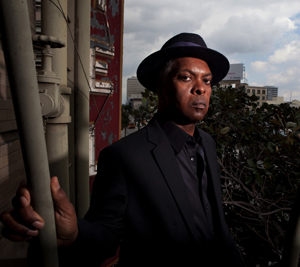
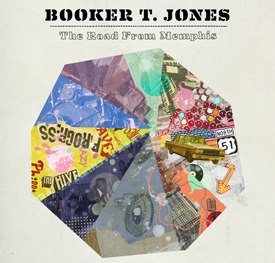
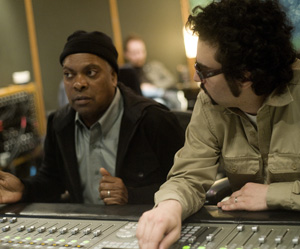
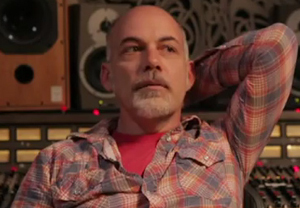
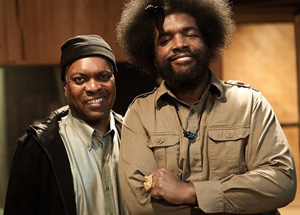
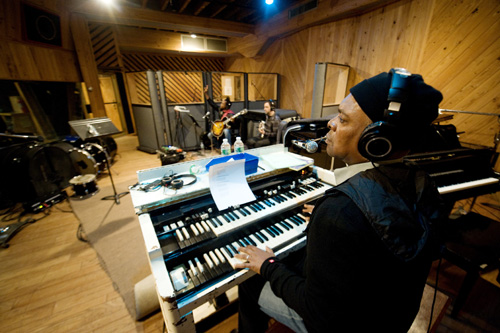
Vladimr
November 20, 2012 at 5:40 am (12 years ago)One of my favorite records in a while. I’m glad people are still making music like this. A real treat to understand a little about how it was done. I listened and wondered (studio engineer myself). Thanks for the coverage on real good music.